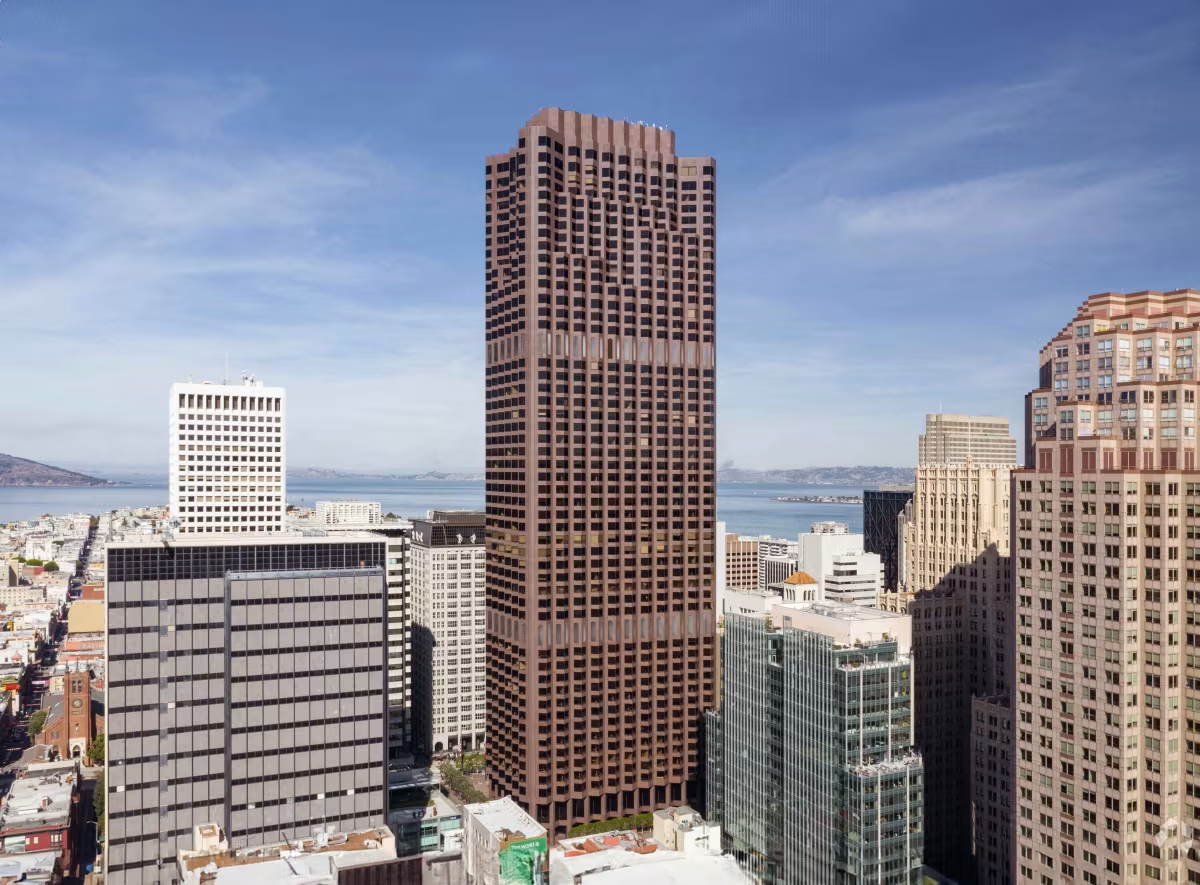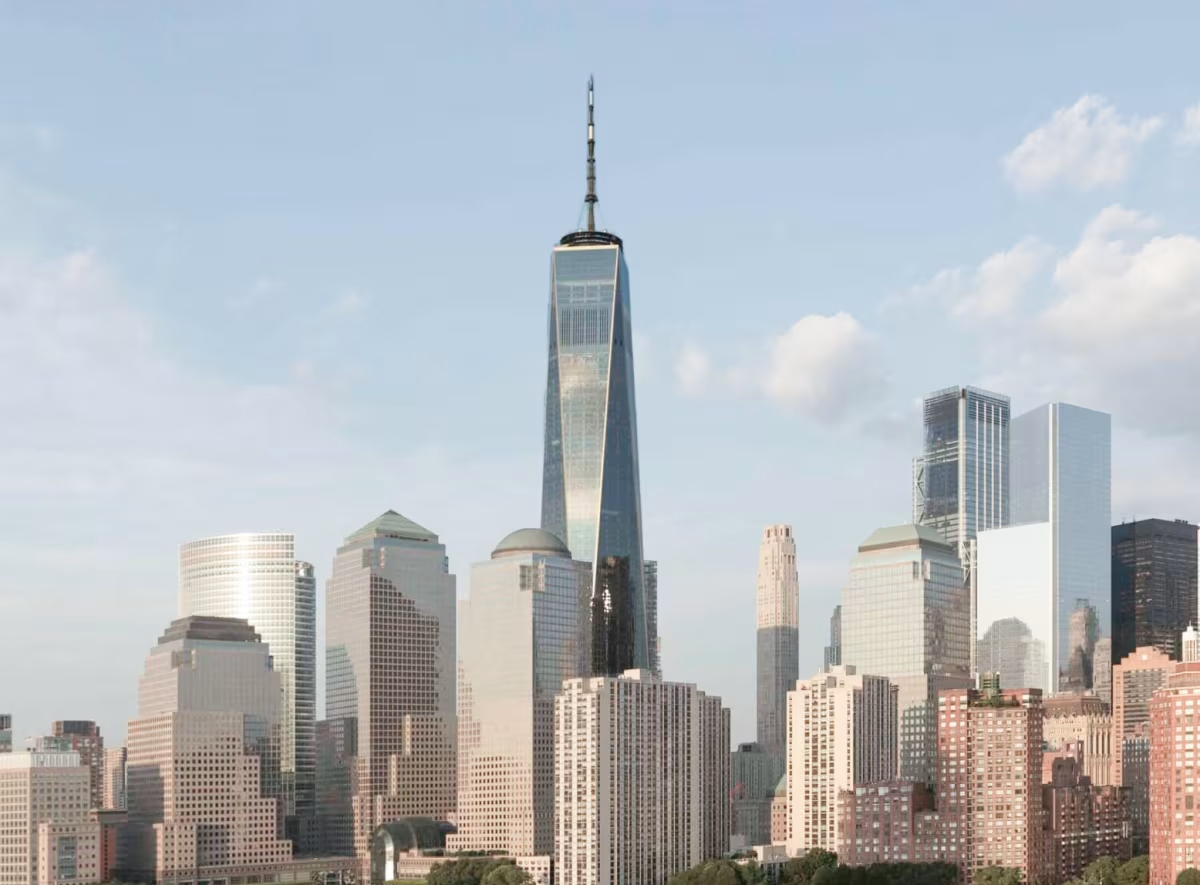555 California Street Building vs One World Trade Center


Comparing the 555 California Street Building and the One World Trade Center is compelling because they were both designed by Skidmore, Owings & Merrill, yet they stand in different cities (San Francisco, CA and New York, NY), and were completed over two decades apart.
What this will allow us to see, is how the same firm's approach adapted to different places in different periods of time.
Height & Size
The One World Trade Center is clearly the larger tower of the two, both in terms of height and number of floors. It rises to 1775ft (541m) with 104 floors above ground, while the 555 California Street Building reaches 778ft (237m) with 52 floors above ground.
One World Trade Center also offers more total built-up area, a total fo 3,500,000 sqf (325,161m2), which is about 1,530,002 sqf (142,142m2) more than what the 555 California Street Building offers.
Of course, each project may have faced different briefs or regulatory constraints, which we don't really know about and could also explain the outcome.
Architectural Style
The 555 California Street Building was designed in the Postmodernism style, while the One World Trade Center reflects the principles of Contemporary.
The 555 California Street Building was completed when the Postmodernism was still emerging, which gave it a pioneering character. The One World Trade Center, on the other hand, followed the more established Contemporary, reflecting the prevailing conventions of its day.Uses
Both the 555 California Street Building and the One World Trade Center were designed to serve as commercial towers, and that has remained their main use since their completion, serving similar roles in the urban fabric.
The 555 California Street Building also provides 450 parking spaces.
Structure & Facade
Both the 555 California Street Building and the One World Trade Center rely on a Framed Tube In Tube structural system.
A tube-in-tube system combines a reinforced central core with a perimeter of columns connected by floor slabs. This arrangement creates a stiff structure that resists both vertical and lateral forces efficiently.
They also employ the same type of facade, a Curtain Wall facade.
A curtain wall is a non-load-bearing facade hung from the structural frame. It is anchored to floor slabs and transfers only its own weight and wind loads, allowing for sleek, glassy exteriors.
| 555 California Street Building | One World Trade Center | |
|---|---|---|
| Skidmore, Owings & Merrill | Architect | Skidmore, Owings & Merrill |
| 1967 | Construction Started | 2006 |
| 1969 | Year Completed | 2014 |
| Postmodernism | Architectural Style | Contemporary |
| Commercial | Current Use | Commercial |
| 52 | Floors Above Ground | 104 |
| 4 | Floors Below Ground | 5 |
| 237 m | Height (m) | 541 m |
| 183019 | Built-up Area (m²) | 325161 |
| 38 | Number of Elevators | 73 |
| Framed Tube In Tube | Structure Type | Framed Tube In Tube |
| Steel | Vertical Structure Material | Steel |
| Concrete, Steel | Horizontal Structure Material | Poured Concrete Over Metal Decking |
| No | Facade Structural? | No |
| Granite, Glass | Main Facade Material | Glass, Steel |
| Dinwiddie Construction | Main Contractor | Tishman Construction |
| Bank Of American National Trust & Savings Association | Developer | Port Authority Of New York And New Jersey |
| Lawrence And Associates | Landscape Architect | Mathews Nielsen Landscape Architects And Architects Peter Walker Landscape Architecture |
| H. J. Brunnier Associates | Structural Engineer | WSP Group |
| CA | State | NY |
| San Francisco | City | New York |
| 555 California Street | Address | 285 Fulton Street |